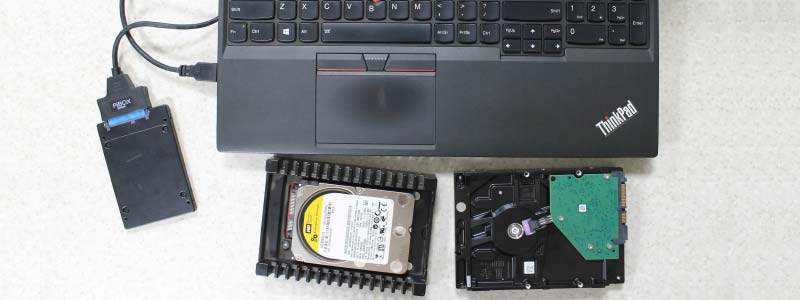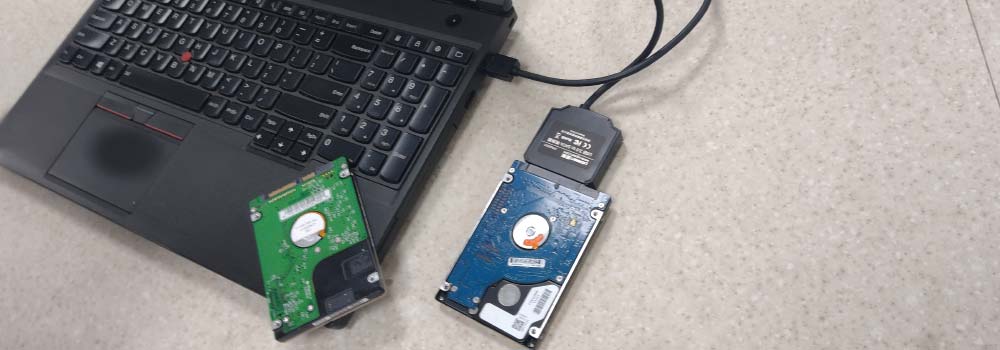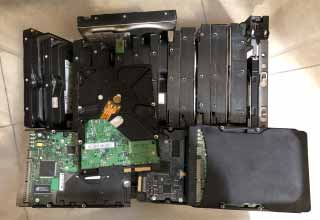Data Recovery Software
TechnoGeek | Published On: March 20, 2023
Data Recovery is used for retrieving the inaccessible data from damaged, corrupted, formatted, failed storage media. Often the data can be lost due to physical damage to the storage device or logical damage to the file system that prevents it from being accessed by the user. On the basis of different lost reasons, different data recovery programs can be adopted.
The deleted data still exists on the storage medium even after lost due to various malicious reasons like system crash, pressing shift+del keys, emptied recycle bin, power sabotage, accidental deletion, root directory entries corruption etc. The best way to insure the security of your data is its regular prevention and backup, this will reduce the danger of data loss to the lowest. The data can be lost from primary and secondary storage media that includes FAT/NTFS partitioned hard disk drives like ATA, SATA, IDE and EIDE and various USB flash removable media drives like Memory cards (MMC, micro card, Mini SD card, Micro SD card, Micro Drive etc) and digital music players (iPod, Zune music player).

The disk recovery program and file rescue utility supports all major brands of hard disks drives and removable media that include IBM, Imation, Compaq, Lenovo, HP, Hitachi, Highpoint, Generic, Manpower etc.
-
Windows Data Recovery Software
Windows data recovery software easily recovers and restores files and folders lost from corrupted, formatted or partitioned hard disk drives.
-
NTFS
Data Recovery Software
The software is capable to rescue files damaged, lost, missed from NTFS and NTFS5 file system partitioned hard disk drives.
-
FAT
Data Recovery Software
FAT partitioned hard drive recovery utility undelete data deleted due to power failure, corrupted disk directory; accidental loss etc from FAT, FAT12, FAT16, FAT32 and VFAT file system based hard disk drives.
-
Memory Card Data Recovery
Software
Memory card files recovery software provides effective data recovery solutions that recover deleted data reliably and accurately from corrupted memory cards storage media.
-
iPod
Data Recovery Software
Easily and quickly recover iPod files lost due to file sharing using i-Tunes software with the help of iPod music recovery software.
-
Zune Music Recovery Software
Restore lost audio, video, image, picture files etc from Zune music player in less time with the help of digital Zune music recovery software.
Approaches to Data Recovery
Data recovery is the process of retrieving lost or inaccessible data from damaged or corrupted storage devices, such as hard drives, solid-state drives (SSDs), memory cards, and USB drives. Data loss can occur due to various reasons, such as hardware failures, software bugs, human errors, and natural disasters. The goal of data recovery is to restore as much of the lost data as possible and make it accessible to the user.
There are two main approaches to data recovery: logical data recovery and physical data recovery. Logical data recovery involves the use of software tools to retrieve data from a device that is still functioning but has some logical damage, such as a corrupted file system or a lost partition. Physical data recovery, on the other hand, is required when the physical components of a device have failed and need to be repaired or replaced in order to recover the data.
In the case of logical data recovery, the first step is to identify the cause of the data loss. For example, if a file system is corrupted, the data recovery software must first repair the file system in order to access the lost data. If a partition is missing, the software must locate and recover the partition table in order to restore access to the lost data.
Once the cause of the data loss has been identified, the data recovery software can be used to scan the device for recoverable data. The software uses various techniques to search for the lost data, including searching for known file headers and footers, scanning for patterns of data that are common to certain types of files, and using error correction algorithms to recover data from damaged sectors.
Once the recoverable data has been found, the data recovery software can then copy the data to a new storage device, such as a new hard drive or a USB drive. This allows the user to access the recovered data and use it again.
In the case of physical data recovery, the process is much more complex and often requires the use of specialized equipment and expertise. The first step in physical data recovery is to diagnose the problem with the device. For example, if the device is making a clicking sound, this could indicate a problem with the head assembly or the spindle motor. If the device is not spinning up, this could indicate a problem with the power supply or the controller board.
Once the problem has been diagnosed, the data recovery specialist can then repair or replace the damaged components in order to restore access to the lost data. This may involve opening up the device, removing and replacing faulty components, and reassembling the device.
In some cases, data recovery may involve the use of specialized imaging software and hardware to create an exact copy of the damaged device. This image can then be used to perform data recovery on the copy, without further damaging the original device.
Once the damaged device has been repaired or the image has been created, the data recovery specialist can then use software tools to search for and recover the lost data. This may involve using file carving techniques to recover individual files and folders, or using data recovery algorithms to recover data from damaged sectors.
Once the lost data has been recovered, the data recovery specialist can then copy the data to a new storage device, such as a new hard drive or a USB drive. This allows the user to access the recovered data and use it again.
Data recovery can be a time-consuming and complex process, and the success of the recovery depends on many factors, such as the type of data loss, the age and condition of the device, and the expertise of the data recovery specialist. In some cases, data recovery may not be possible, especially if the device has suffered physical damage that cannot be repaired.

Data recovery refers to the process of salvaging and retrieving inaccessible, corrupted, damaged, or lost data from various storage media and devices, such as hard drives, solid-state drives (SSDs), memory cards, USB drives, and other types of storage devices. This is done in order to restore the data to its original state and make it usable again.
Data loss can occur due to various reasons, such as hardware failures, software glitches, power surges, virus attacks, human error, and natural disasters. In such scenarios, data recovery can be a critical and essential process for organizations, individuals, and businesses, as it can help recover valuable information that is otherwise lost permanently.
It is important to note that not all data can be recovered, and the success of the data recovery process will depend on several factors, such as the type of data loss, the extent of damage, and the type of storage device. In some cases, data recovery may not be possible due to the severe nature of the damage.
There are various data recovery software and tools available that can be used to recover lost data, but they may not be as effective as professional data recovery services. Professional data recovery services use specialized tools and techniques that are not available to the general public, and they have the expertise and experience to handle complex data recovery cases.
Whether it is due to hardware failures, software glitches, power surges, virus attacks, human error, or natural disasters, data recovery can help restore the data to its original state and make it usable again. If you have experienced data loss, it is recommended that you seek the assistance of a professional data recovery service to ensure the best possible outcome.
